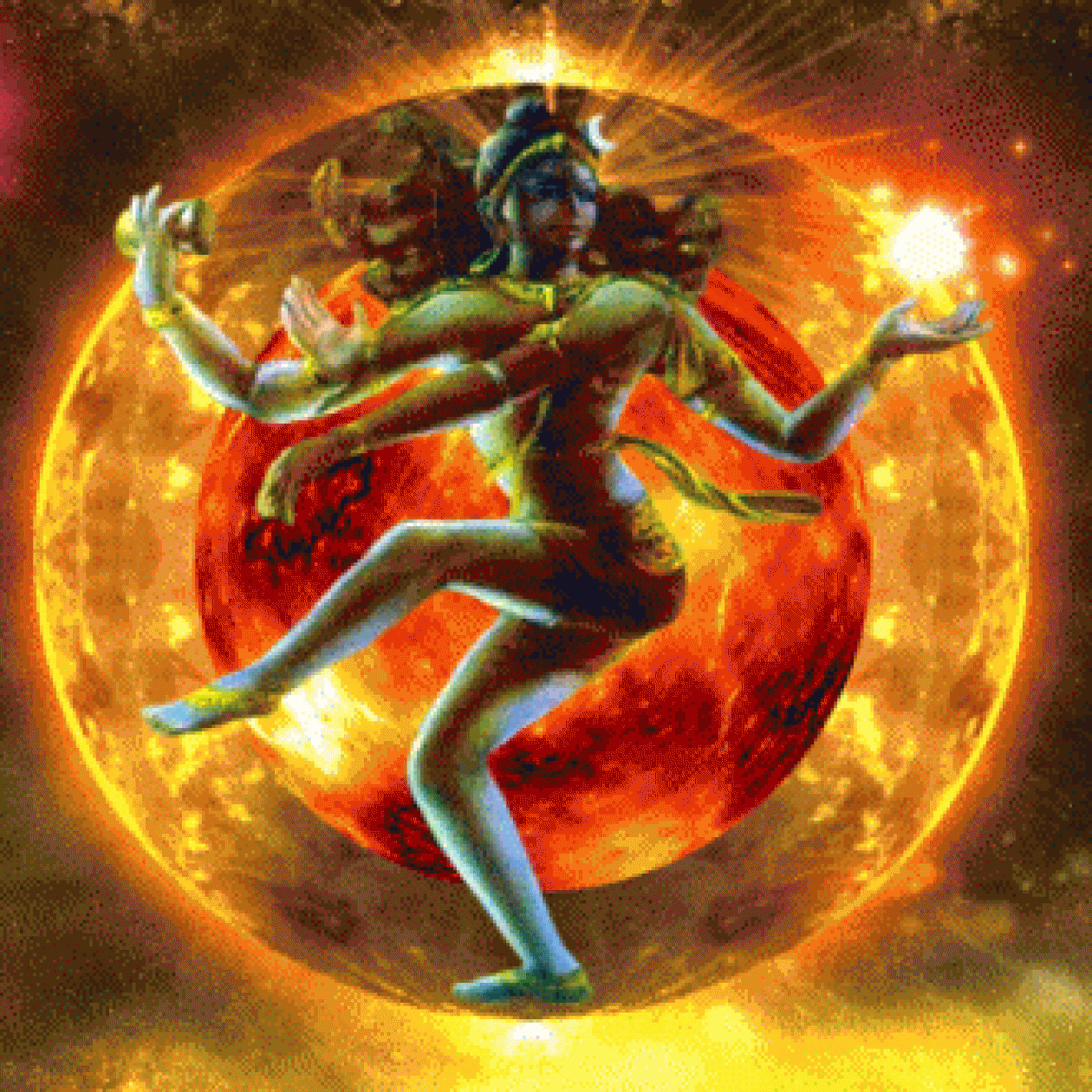Amazing Science, Cosmology and Psychology, Medicine (Ayurveda)-PART 3
Atomic theory
![Photo: Amazing Science, Cosmology and Psychology, Medicine (Ayurveda)
Part3
Atomic theory
Sage Kanad (circa 600 BCE) is recognized as the founder of atomic theory, and classified all the objects of creation into nine elements (earth, water, light or fire, wind, ether, time, space, mind and soul). He stated that every object in creation is made of atoms that in turn connect with each other to form molecules nearly 2,500 years before John Dalton. Further, Kanad described the dimension and motion of atoms, and the chemical reaction with one another. The eminent historian, T.N. Colebrook said, "Compared to scientists of Europe, Kanad and other Indian scientists were the global masters in this field."
Chemistry alchemical metals
In the field of chemistry alchemical metals were developed for medicinal uses by sage Nagarjuna. He wrote many famous books, including Ras Ratnakar, which is still used in India's Ayurvedic colleges today. By carefully burning metals like iron, tin, copper, etc. Into ash, removing the toxic elements, these metals produce quick and profound healing in the most difficult diseases.
Astronomy and mathematics
Sage Aryabhatt (b. 476 CE) wrote texts on astronomy and mathematics. He formulated the process of calculating the motion of planets and the time of eclipses. Aryabhatt was the first to proclaim the earth was round, rotating on an axis, orbiting the sun and suspended in space. This was around 1,000 years before Copernicus. He was a geometry genius credited with calculating pi to four decimal places, developing the trigonomic sine table and the area of a triangle. Perhaps his most important contribution was the concept of the zero. Details are found in Shulva sutra. Other sages of mathematics include Baudhayana, Katyayana, and Apastamba.
Astronomy, geography, constellation science, botany and animal science.
Varahamihra (499 - 587 CE) was another eminent astronomer. In his book, Panschsiddhant, he noted that the moon and planets shine due to the sun. Many of his other contributions captured in his books Bruhad Samhita and Bruhad Jatak, were in the fields of geography, constellation science, botany and animal science. For example,he presented cures for various diseases of plants and trees.
Knowledge of botany (Vrksh-Ayurveda) dates back more than 5,000 years, discussed in India's Rig Veda. Sage Parashara (100 BCE) is called the "father of botany" because he classified flowering plants into various families, nearly 2,000 years before Lannaeus (the modern father of taxonomy). Parashara described plant cells - the outer and inner walls, sap color-matter and something not visible to the eye - anvasva. Nearly 2,000 years -later, Robert Hooke, using a microscope described the outer and inner wall and sap color-matter.
Algebra, arithmetic and geometry, planetary positions, eclipses,cosmography, and mathematical techniques. Force of gravity
In the field of mathematics, Bhaskaracharya II (1114 - 1183 CE) contributed to the fields of algebra, arithmetic and geometry. Two of his most well known books are Lilavati and Bijaganita, which are translated in several languages of the world. In his book, Siddhant Shiromani, he expounds on planetary positions, eclipses, cosmography, and mathematical techniques. Another of his books, Surya Siddhant discusses the force of gravity, 500 years before Sir Isaac Newton. Sage Sridharacharya developed the quadratic equation around 991 CE.
The Decimal
Ancient India invented the decimal scale using base 10. They number-names to denote numbers. In the 9th century CE, an Arab mathematician, Al-Khwarizmi, learned Sanskrit and wrote a book explaining the Hindu system of numeration. In the 12th century CE
The book was translated into Latin. The British used this numerical system and credited the Arabs - mislabelling it 'Arabic numerals'. "We owe a lot to the Indians, who taught us how to count, without which no worthwhile scientific discovery could have been made." - Albert Einstein.
Metallurgy
India was the world-leader in Metallurgy for more than 5,000 years. Gold Jewellery is available from 3,000 BCE. Brass and bronze pieces are dated back to 1,300 BCE. Extraction of zinc from ore by distillation was used in India as early as 400 BCE, while European William Campion patented the process some 2,000 years later. Copper statues can be dated back to 500 CE. There is an iron pillar in Delhi dating back to 400 CE that shows no sign of rust or decay.
There are two unique aspects to India's ancient scientists. First their discoveries are in use today as some of the most important aspects of their field; and are validated by modern technological machines. Second, their discoveries brought peace and prosperity rather than the harm and destruction of many of our modern discoveries.
Due to their intense spiritual life, they developed such power of discrimination (vivek). Spirituality gives helpful direction and science brings speed. With a core of spirituality, modern scientists' discoveries can quickly bring only helpful ideas to help humanity. While Einstein is credited with the idea that one can travel faster than the speed of light, it was written about centuries before in the ancient Vedic literature. Perhaps it was Einstein's association with the famed Indian physicist, Bose that led to his introduction to the views about the speed of light. Through deep meditation and reading the ancient Vedic texts, who knows what our modern-day scientists will discover?
There are two points here, the first is that India should be proud of its amazing achievements and be properly credited, and the second is that India leaves a blueprint, compass and map for how to develop safe and helpful discoveries for the future betterment of mankind.
Bacteria- Viruses
This mobile and immobile universe is food for living creatures.
This has been ordained by the gods. The very ascetics cannot support their lives without killing creatures. In water, on earth, and fruits, there are innumerable creatures. It is not true that one does not slaughter them. What higher duty is there than supporting one's life? There are many creatures that are so minute that their existence can only be inferred. With the falling of the the eyelids alone, they are destroyed.
Physiology
The constituent elements of the body, which serve diverse functions in the general economy, undergo change every moment in every creature. Those changes, however, are so minute that they cannot be noticed. The birth of particles, and their death, in each successive condition, cannot be marked, O king, even as one cannot make the changes in the flame of a burning lamp. When such is the state of the bodies of all creatures, - that is when that which is called the body is changing incessantly even like the rapid locomotion of a steed of good mettle- who then has come whence or not whence, or whose is it or whose is it not, or whence does it not arise? What connection does there exist between creatures and their own bodies?
[Note: The fact of continual change of particles in the body was well known to the Hindu sages. This discovery is not new of modern physiology. Elsewhere it has been shown that Harvey’s great discovery about the circulation of the blood was not unknown to the Rishis. The instance mentioned for illustrating the change of corporal particles is certainly a very apt and happy one. The flame of a burning lamp, though perfectly steady (as in a breezeless spot), is really the result of the successive combustion of particles of oil and the successive extinguishments of such combustion.]
Science of Speech
From The Mahabharata, Santi Parva, Section CCCXXI
Sulabha said: O king, speech ought always to be free from the nine verbal faults and the nine faults of judgment. It should also, while setting forth the meaning with perspicuity, be possessed of the eighteen well-known merits.
1.Narada approached Sanatkumara and said: “Sir, teach me.”
“Come and tell me what you know,” he replied, “and then I will teach you what is beyond that.”
2.“Sir, I know the Rig-Veda, the Yajur-Veda, the Sama-Veda and Atharvan the fourth; and also the Itihasa-Purana as the fifth. I know the Veda of the Vedas (viz., grammar), the rules for the propitiation of the Pitris (ancestors), the science of numbers, the science of portents, the science of time, the science of logic, ethics and politics, the science of the gods, the science of scriptural studies, the science of the elemental science, the science of weapons, the science of the stars, the science of snake-charming and the fine arts – all these, Sir, I know,”
3.“But, Sir, with all these I am only a knower of words, not a knower of the Self. I have heard from holy men like you that he who knows the Self crosses over sorrow. I am in sorrow. Do, Sir, help me to cross over to the other side of sorrow.”
4.To him he then said: “Verily, whatever you have learned here is only a name.
“That which is Infinite – that, indeed, is happiness. There is no happiness in anything that is finite. The Infinite alone is happiness. But this Infinite one must desire to understand.”
.......To be Cont.....
...............................................](https://scontent-b-iad.xx.fbcdn.net/hphotos-xpf1/t1.0-9/p417x417/10452379_10152551784074273_4227397315872386114_n.jpg)
Sage Kanad (circa 600 BCE) is recognized as the founder of atomic theory, and classified all the objects of creation into nine elements (earth, water, light or fire, wind, ether, time, space, mind and soul). He stated that every object in creation is made of atoms that in turn connect with each other to form molecules nearly 2,500 years before John Dalton. Further, Kanad described the dimension and motion of atoms, and the chemical reaction with one another. The eminent historian, T.N. Colebrook said, “Compared to scientists of Europe, Kanad and other Indian scientists were the global masters in this field.”
Chemistry alchemical metals
In the field of chemistry alchemical metals were developed for medicinal uses by sage Nagarjuna. He wrote many famous books, including Ras Ratnakar, which is still used in India’s Ayurvedic colleges today. By carefully burning metals like iron, tin, copper, etc. Into ash, removing the toxic elements, these metals produce quick and profound healing in the most difficult diseases.
Astronomy and mathematics
Sage Aryabhatt (b. 476 CE) wrote texts on astronomy and mathematics. He formulated the process of calculating the motion of planets and the time of eclipses. Aryabhatt was the first to proclaim the earth was round, rotating on an axis, orbiting the sun and suspended in space. This was around 1,000 years before Copernicus. He was a geometry genius credited with calculating pi to four decimal places, developing the trigonomic sine table and the area of a triangle. Perhaps his most important contribution was the concept of the zero. Details are found in Shulva sutra. Other sages of mathematics include Baudhayana, Katyayana, and Apastamba.
Astronomy, geography, constellation science, botany and animal science.
Varahamihra (499 – 587 CE) was another eminent astronomer. In his book, Panschsiddhant, he noted that the moon and planets shine due to the sun. Many of his other contributions captured in his books Bruhad Samhita and Bruhad Jatak, were in the fields of geography, constellation science, botany and animal science. For example,he presented cures for various diseases of plants and trees.
Knowledge of botany (Vrksh-Ayurveda) dates back more than 5,000 years, discussed in India’s Rig Veda. Sage Parashara (100 BCE) is called the “father of botany” because he classified flowering plants into various families, nearly 2,000 years before Lannaeus (the modern father of taxonomy). Parashara described plant cells – the outer and inner walls, sap color-matter and something not visible to the eye – anvasva. Nearly 2,000 years -later, Robert Hooke, using a microscope described the outer and inner wall and sap color-matter.
Algebra, arithmetic and geometry, planetary positions, eclipses,cosmography, and mathematical techniques. Force of gravity
In the field of mathematics, Bhaskaracharya II (1114 – 1183 CE) contributed to the fields of algebra, arithmetic and geometry. Two of his most well known books are Lilavati and Bijaganita, which are translated in several languages of the world. In his book, Siddhant Shiromani, he expounds on planetary positions, eclipses, cosmography, and mathematical techniques. Another of his books, Surya Siddhant discusses the force of gravity, 500 years before Sir Isaac Newton. Sage Sridharacharya developed the quadratic equation around 991 CE.
The Decimal
Ancient India invented the decimal scale using base 10. They number-names to denote numbers. In the 9th century CE, an Arab mathematician, Al-Khwarizmi, learned Sanskrit and wrote a book explaining the Hindu system of numeration. In the 12th century CE
The book was translated into Latin. The British used this numerical system and credited the Arabs – mislabelling it ‘Arabic numerals’. “We owe a lot to the Indians, who taught us how to count, without which no worthwhile scientific discovery could have been made.” – Albert Einstein.
Metallurgy
India was the world-leader in Metallurgy for more than 5,000 years. Gold Jewellery is available from 3,000 BCE. Brass and bronze pieces are dated back to 1,300 BCE. Extraction of zinc from ore by distillation was used in India as early as 400 BCE, while European William Campion patented the process some 2,000 years later. Copper statues can be dated back to 500 CE. There is an iron pillar in Delhi dating back to 400 CE that shows no sign of rust or decay.
There are two unique aspects to India’s ancient scientists. First their discoveries are in use today as some of the most important aspects of their field; and are validated by modern technological machines. Second, their discoveries brought peace and prosperity rather than the harm and destruction of many of our modern discoveries.
Due to their intense spiritual life, they developed such power of discrimination (vivek). Spirituality gives helpful direction and science brings speed. With a core of spirituality, modern scientists’ discoveries can quickly bring only helpful ideas to help humanity. While Einstein is credited with the idea that one can travel faster than the speed of light, it was written about centuries before in the ancient Vedic literature. Perhaps it was Einstein’s association with the famed Indian physicist, Bose that led to his introduction to the views about the speed of light. Through deep meditation and reading the ancient Vedic texts, who knows what our modern-day scientists will discover?
There are two points here, the first is that India should be proud of its amazing achievements and be properly credited, and the second is that India leaves a blueprint, compass and map for how to develop safe and helpful discoveries for the future betterment of mankind.
Bacteria- Viruses
This mobile and immobile universe is food for living creatures.
This has been ordained by the gods. The very ascetics cannot support their lives without killing creatures. In water, on earth, and fruits, there are innumerable creatures. It is not true that one does not slaughter them. What higher duty is there than supporting one’s life? There are many creatures that are so minute that their existence can only be inferred. With the falling of the the eyelids alone, they are destroyed.
Physiology
The constituent elements of the body, which serve diverse functions in the general economy, undergo change every moment in every creature. Those changes, however, are so minute that they cannot be noticed. The birth of particles, and their death, in each successive condition, cannot be marked, O king, even as one cannot make the changes in the flame of a burning lamp. When such is the state of the bodies of all creatures, – that is when that which is called the body is changing incessantly even like the rapid locomotion of a steed of good mettle- who then has come whence or not whence, or whose is it or whose is it not, or whence does it not arise? What connection does there exist between creatures and their own bodies?
[Note: The fact of continual change of particles in the body was well known to the Hindu sages. This discovery is not new of modern physiology. Elsewhere it has been shown that Harvey’s great discovery about the circulation of the blood was not unknown to the Rishis. The instance mentioned for illustrating the change of corporal particles is certainly a very apt and happy one. The flame of a burning lamp, though perfectly steady (as in a breezeless spot), is really the result of the successive combustion of particles of oil and the successive extinguishments of such combustion.]
Science of Speech
From The Mahabharata, Santi Parva, Section CCCXXI
Sulabha said: O king, speech ought always to be free from the nine verbal faults and the nine faults of judgment. It should also, while setting forth the meaning with perspicuity, be possessed of the eighteen well-known merits.
1.Narada approached Sanatkumara and said: “Sir, teach me.”
“Come and tell me what you know,” he replied, “and then I will teach you what is beyond that.”
2.“Sir, I know the Rig-Veda, the Yajur-Veda, the Sama-Veda and Atharvan the fourth; and also the Itihasa-Purana as the fifth. I know the Veda of the Vedas (viz., grammar), the rules for the propitiation of the Pitris (ancestors), the science of numbers, the science of portents, the science of time, the science of logic, ethics and politics, the science of the gods, the science of scriptural studies, the science of the elemental science, the science of weapons, the science of the stars, the science of snake-charming and the fine arts – all these, Sir, I know,”
3.“But, Sir, with all these I am only a knower of words, not a knower of the Self. I have heard from holy men like you that he who knows the Self crosses over sorrow. I am in sorrow. Do, Sir, help me to cross over to the other side of sorrow.”
4.To him he then said: “Verily, whatever you have learned here is only a name.
“That which is Infinite – that, indeed, is happiness. There is no happiness in anything that is finite. The Infinite alone is happiness. But this Infinite one must desire to understand.”








Pingback: DECODED ORIGINS OF LIFE-ALL YOU WERE TAUGHT IS WRONG | HINDUISM AND SANATAN DHARMA